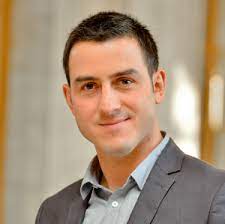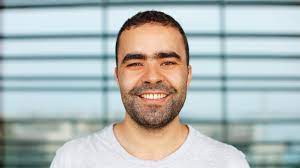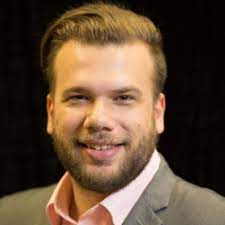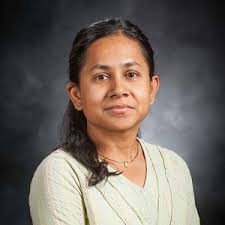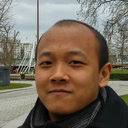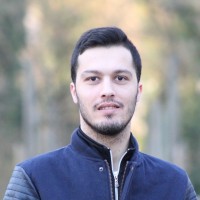
The defense will be held in the Amphitheater, Chappe Building.
Title
Gestion d’Interference Topologique pour les Réseaux Sans Fils Multi-utilisateurs
Abstract
La gestion d’interference topologique (de l’Anglais: Topological Interference Management – TIM) permet l’etude des dégrées de liberté (de l’Anglais: Degrees of Freedom – DoF) de réseaux sans fils soumis à l’interference partielle et dont la connaissance de l’état du canal est limitée seulement à la topologie du réseaux, autrement dit, les liens interférents faibles et forts. Dans ce manuscrit de thèse, nous considérons l’application de TIM pour les réseaux cellulaires d’une dimension (1D) linéaires et les réseaux cellulaires de deux dimensions (2D) hexagonales. Nous considérons le cas des utilisateurs uniformément distribués dans chaque cellule, ce qui donne une distribution continue d’utilisateurs. Ceci nous permet d’étudier la performance des classes d’utilisateurs au contraire des positions des utilisateurs individuels, comme a été fait auparavant. Nous considérons aussi la construction de la topologie au travers de l’analyse des seuils de l’interférence. Contrairement aux travaux existents nous utilisons TIM au niveau des classes des utilisateurs, ce qui nous permet de trouver la performance système en DoF indépendante de la position précise de chaque utilisateur. Ensuite, après avoir proposé un schéma de coloration fractionnaire des graphes resultants, pouvant atteindre la solution optimale de DoF, un compromis entre DoF et SIR est proposé. Cette thèse propose également une nouvelle approche pour construire une topologie d’interférence pour le problème TIM unicast des réseaux sans fil multi-utilisateurs. Fondée sur notre approche de construction de topologie d’interférence, nous pouvons évaluer la limite théorique des taux atteignables, dans le régime SNR asymptotique, pour le réseau sans fil sous-jacent et pas seulement pour sa représentation topologique d’interférence. Cette nouvelle approche nous permet de traiter le régime de SNR fini et pas seulement le régime SNR asymptotique avec l’analyse DoF. Un nouveau paramètre liée au seuil d’interférence, indépendant du SNR, est proposé et nous évaluons les débits symétriques réalisables du réseau sans fil, à la fois en régime SNR fini et en régime SNR asymptotique. Ensuite, nous présentons les bornes supérieures sur ce nouveau paramètre de seuil d’interférence normalisé pour les topologies d’interférence ayant une faisabilité en demi-DoF (de l’Anglais: Half-DoF-feasible), en considérant à la fois une allocation de ressources orthogonale et l’alignement d’interference (de l’Anglais: Interference Alignment – IA). Ces limites spécifient si une topologie d’interférence donnée realisable en demi-DoF peut être, en termes de taux réalisable, la meilleure topologie ou non. En utilisant ce résultat, nous limitons l’espace de recherche dans la plage de paramètres du seuil d’interférence normalisée, pour trouver des topologies d’interférence réalisables à demi-DoF ayant la possibilité d’être les meilleures topologies en termes de taux réalisable. Enfin, cette thèse considère une étude de cas sur le TIM pour les réseaux sans fil à petite échelle, dans laquelle, nous considérons le problème TIM pour les réseaux à quatre utilisateurs en employant notre approche de construction de topologie d’interférence proposée. Ensuite, nous appliquons l’analyse des débits réalisables, proposée dans le cadre de la nouvelle approche de construction de topologie d’interférence, pour toutes les topologies d’interférence réalisables à demi-DoF, à la fois par partage orthogonal et IA, dans le problème TIM de réseaux sans fil à quatre utilisateurs.
Jury
- Florian KALTENBERGER – Maître de Conférences HDR – EURECOM – Rapporteur
- Iñaki ESNAOLA – Senior lecturer – University of Sheffield – Rapporteur
- Ghaya REKAYA-BEN OTHMAN – Professeur des Universités – TELECOM PARIS – Examinatrice
- Laurent CLAVIER – Professeur des Universités – TELECOM LILLE – Examinateur
- Leonardo S. Cardoso – Maître de Conférence – Université de Lyon – Co-directeur
- Jean-Marie Gorce – Professeur des Universités – Université de Lyon – Directeur



